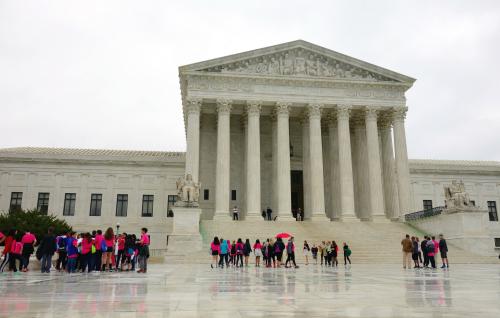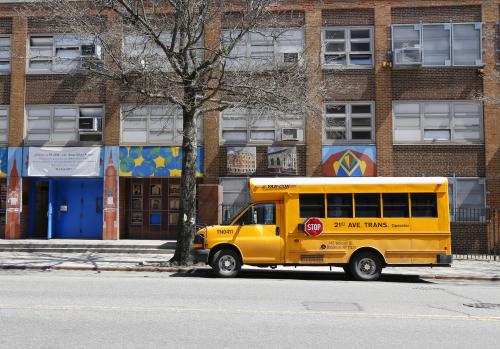This blog is adapted from a story produced by The Hechinger Report, a nonprofit, independent news organization focused on inequality and innovation in education.
Kids go to school to get an education and increase their future job opportunities. But how they get to school is a crucial, underappreciated detail that can make a world of difference to the communities where schools are located.
Earlier this month, Washington, D.C. Mayor Muriel Bowser announced an update to the city’s Kids Ride Free program that will smooth out kinks to an otherwise model program that others should emulate. The update enhances the program that allows students to move around in a city known for its traffic and congestion. In the district, all students between the ages of five and 21 who attend school—including public schools, charter schools, and private schools—are eligible to ride the bus systems (Metrobus, DC Circulator) and rail system (Metrorail) to school and school-related activities for free. Students aren’t limited to a certain number of rides or stops, school days or times, the way they are in other cities.
Under the new system, instead of needing a separate student ID card, students will be able to tap a version of a standard issue SmarTrip Card, used for public transportation in and around the city. The new card system makes it more convenient for parents to properly enroll their children in Kids Ride Free and facilitates better accounting of who is using public transportation.
Allowing kids to ride public transportation for free reflects how students actually live and learn: in communities. We limit students’ educations when we curb their access to museums, libraries, community events, and other places where learning happens. What good is a city of national monuments and museums if students across town can’t access it without hopping on a bus and switching to a train to reach it? Families need access not just to school, but also to quality afterschool programs, sports, and other recreational activities, and they need their children back home in time for dinner.
We limit students’ educations when we curb their access to museums, libraries, community events, and other places where learning happens.
Having students ride for free just makes good sense. We should do it everywhere.
A 2018 report from the Urban Institute, a think tank that focuses on cities, showed that “[c]ities that can more quickly deliver students to school tend to rely more on public transportation to transport students. In cities with less-efficient transportation, students are more likely to be offered yellow bus service.” The report found that in Washington and New York, cities that rely more on public transportation than yellow bus services, an average 10-minute car ride to a school equates to 23 minutes by public transport. However, in Detroit, Denver, and New Orleans, which have school systems that are more dependent on yellow buses, a 10-minute drive takes 32 to 34 minutes by public transportation. Washington and New York showed better results than New Orleans largely because of their expansive subway systems, which are much more efficient for longer routes to school. However, students in all cities, regardless of the efficiency of their public transport, need to be able to get to school in a reasonable amount of time. All of our cities need to find ways to reduce the time it takes kids to get to school.







Commentary
The route school buses can take toward racial equity
June 19, 2018